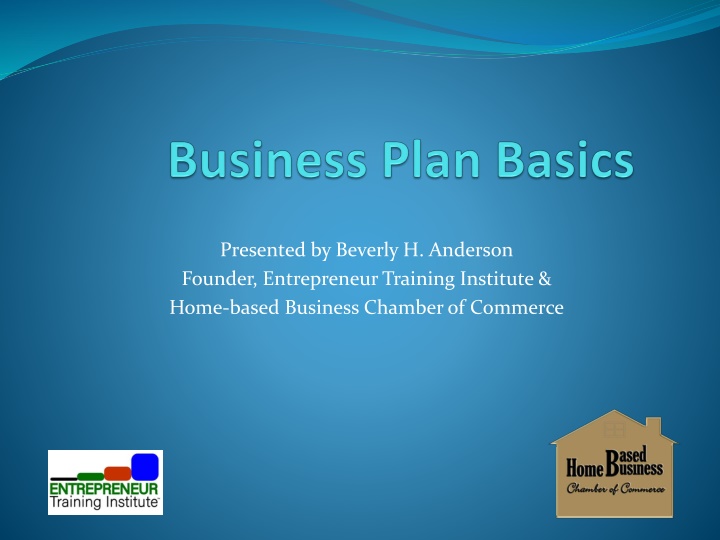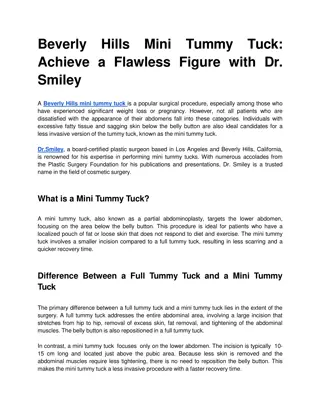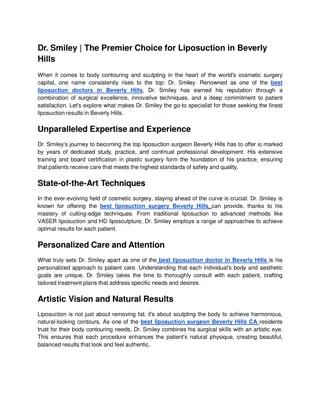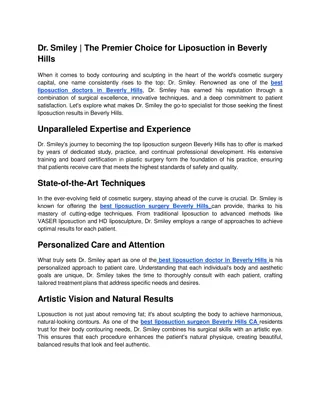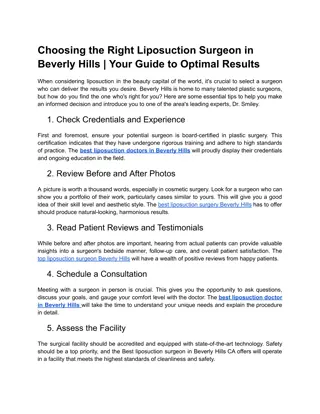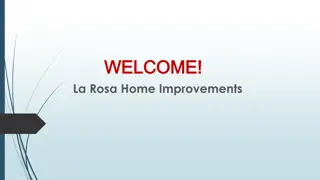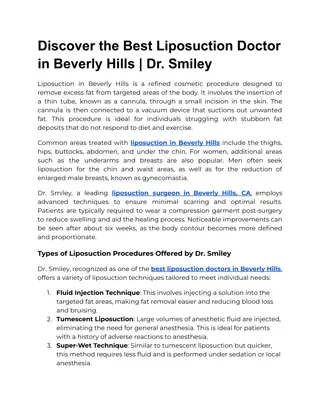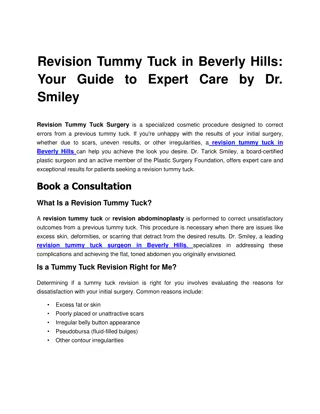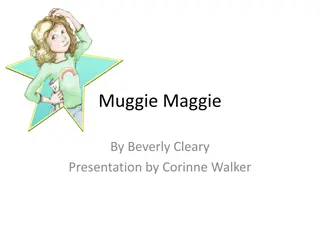Business Plan Overview by Beverly H. Anderson
Providing insight into a comprehensive business plan by Beverly H. Anderson, covering aspects such as business profile, vision, team commitment, communication tools, organization structure, and licensing requirements, essential for successful entrepreneurship. The plan outlines target markets, growth trends, pricing strategies, team experience, equipment budgeting, legal consultancy, and necessary permits.
Download Presentation

Please find below an Image/Link to download the presentation.
The content on the website is provided AS IS for your information and personal use only. It may not be sold, licensed, or shared on other websites without obtaining consent from the author.If you encounter any issues during the download, it is possible that the publisher has removed the file from their server.
You are allowed to download the files provided on this website for personal or commercial use, subject to the condition that they are used lawfully. All files are the property of their respective owners.
The content on the website is provided AS IS for your information and personal use only. It may not be sold, licensed, or shared on other websites without obtaining consent from the author.
E N D
Presentation Transcript
Presented by Beverly H. Anderson Founder, Entrepreneur Training Institute & Home-based Business Chamber of Commerce
Business Profile Description of the Business Describe your service or product Target market and Customers Describe your customer profile and why your customers want and need your services or products Growth Trends Is the market for your product growing or shrinking? Pricing Power Explain the unique qualities or circumstances concerning your product or service that will enable you to maintain profitable pricing.
The Vision and the Team Describe convincingly that you are passionately committed to your new business and have the realism to make inevitable hard choices. Summarize number of years of experience in this field. Describe your work experience in the business you plan to start including a list of your skills and knowledge, which will be required in your business. Background and educational credentials of you and your team Describe yourself, including your education.
Communication Computer and Communications Tools Furnish a tabulation of each piece of equipment you intend to use including a description and the budget for each. You can use the following as a guide. Communications Telephones Facsimile/E-fax Computers Internet
Organization Business Organization Explain the form of business organization you intend to use and why it is best for your business. Professional Consultants List the names of your lawyer, accountant, insurance agent and any other professionals. Licenses List what licenses you will require to go into business.
License, Permits, and Business Names List the following: DBA: List the name you intend to do business as Zoning: Indicate if the zoning if appropriate for your intended office location Licenses: List the appropriate licenses you will need at the local, state, and federal level Trademark: Indicate your trademark intentions if any exist Sellers Permit: List any sellers permits that you may need EIN: Indicate if you will obtain an employers identification number
Insurance List the forms of insurance coverage including costs are anticipated. Liability Workman s Compensation Medical Disability Life
Premises Outline your location criteria. Space requirements Future requirements Site analysis study if needed (attach) Demographic study if needed (attach) Lease check-off list (attach) Estimated occupancy cost as a % of sales Zoning and use approvals
Accounting and Cash Flow Accounting Furnish, as a separate exhibit of your starting balance sheet and projected income statements for the first six months to one year. Cash Flow Planning Provide a separate exhibit of your one year cash flow analysis including estimated sales, all costs and capital investments. Provide a checklist of all expense items for input into your cash flow projection.
Financing Strategy Provide a chart or spreadsheet showing all of the sources of your start-up capital. Explain any government assistance or loan guarantee programs you intend to apply for. If your business is for use with potential lenders, include a cash flow projection and projected income statements to show sources of repayment of loans. Be conservative in your forecasts. List your sources of referrals to lending institutions. (Your accountant, etc.) THERE ARE NO GRANTS FOR FOR-PROFIT BUSINESSES!
Chart of Accounts Income (Revenue) Expenses Sales Grants/Donations (Non- profits) Other Income Advertising Contract Labor Dues & Subscriptions Furniture & Equipment Insurance Office Supplies/Expenses Professional Fees (Atty/Acct) Repairs & Maintenance Taxes/Licenses/Permits Telephone/Utilities Income Expenses = Net Profit
E-Commerce Plans Describe in detail how you plan to use the Internet in marketing your product or service. E-Commerce Budgeting Provide a detailed breakdown of the costs involved in creating, operating and maintaining your e-commerce activities. E-Commerce Competition Describe how your best competitors utilize e-commerce and your strategy to improve on their practices.
Marketing Marketing Plan Describe your overall marketing and sales strategy including how you plan to get and retain customers. Advertising and Promotion Plans Describe your plans and budgets for advertising and promotions. Purchasing and Inventory Control Training Policies Describe your plans for hiring and training your sales associates.
Competition The Competition Describe your strongest competitors and how you intend to compete. How I Plan to Take Advantage of Competitors Weak Points List your competitor's shortcomings and how you can capitalize on
Resources Entrepreneur Training Institute 901-498-7675 www.myETInstitute.org Home-based Business Chamber of Commerce 901-504-0692 SCORE 901-544-3588 www.Memphis.score.org My Own Business www.myownbusiness.com
